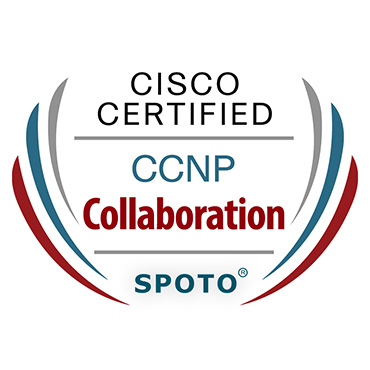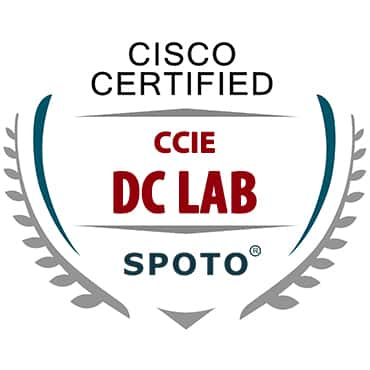Are you gearing up for a round of networking interviews? The following is a list of common CCNA networking interview questions and answers. These questions and answers can assist you in passing your networking interviews on the first go. If you want to get CCNA exam tips or study materials, click below to get more sure-shot CCNA dumps with special offer!
| Categories | Exam Code | Pass Exam Dumps |
|---|---|---|
| CCNA | 200-301 | |
| 200-901 DevNet | ||
| 200-201 Cyber Ops |
• What exactly is a gateway?
A gateway is a network node that can be used as an entry point for other networks. It is a separate piece of hardware from the usual gateway.
• What exactly is a point-to-point link?
A point-to-point network connects two nodes of a network, and a point-to-point link combines both nodes.
• What is Multiple Access, and how does it work?
Multiple Access allows multiple devices to send data over the same network at the same time. This can be done using either a star or a mesh topology.
• What are the advantages of subnetting?
Subnetting allows us to divide an extensive network into smaller networks and assign IP addresses to those networks without changing our leading network. It will enable us to make better use of our IP addresses.
• What is BGP (Border Gateway Protocol), and how does it work?
BGP is an outside gateway protocol that allows two or more autonomous systems to communicate with each other. It is extensively used to route Internet traffic. It can also be used for internal AS, but we have better internal communication protocols. It has a 20-kilometer administrative distance for exterior roads and a 200-kilometer administrative distance for interior routes.
• How does the Gateway-to-Gateway protocol work?
The Gateway-to-Gateway protocol is no longer in use. This was used for datagram routing between internet gateways. It makes use of the Minimum Hop Algorithm.
• What is a Multi-homed Host, and how does it work?
A multi-homed host is a node that is connected to multiple networks. A PC, for example, can connect to both a home network and a VPN. Multiple addresses can be assigned to these hosts, one for each network.
• Some CCNA OSPF interview questions and answers: What is OSPF, and how does it work?
Open Shortest Path First (OSPF) is an acronym for Open Shortest Path First. It’s a link-state routing system that can connect many networks with no constraint on the number of hops between them. It employs the Dijkstra Algorithm and uses Cost as a statistic. It has an AD of 110 and connects using the principles of Areas, Router-id, Process-id, and Virtual Link. OSPF vs BGP: What are differences and which to use?
• What is the purpose of routing?
The process of exchanging route information from one Router to another is known as routing. It is impossible to join two or more networks located in different or the same geographical areas without routing.
• What exactly is a protocol?
A protocol is a collection of rules that a sender and receiver agree to follow to exchange data. Data communication between networks is handled via protocols.
• What are the requirements for a network to be effective and efficient?
Alternative paths must be available for a successful network, convergence must be quick, and the network must never go down. The network should be both cost-effective and secure.
• What are the main benefits of employing switches?
The switch does not broadcast on every port. They can be maintained, and virtual private networks (VPNs) can be constructed. They’re quick and can save MAC addresses. They also don’t divide the bandwidth between the ports.
• What causes network congestion?
Congestion can arise as a result of the media’s capacity being exceeded. Congestion can occur when a media carries data over its capacity.
• Is a bridge used to split a network into smaller segments?
A bridge, on the other hand, does not divide a network into smaller portions.
You may also like:
Top 10 Tips for Successful CCNA Exam Prep
What are the Key OSPF Areas and Different LSA Types in Networking?
• How long does an IP address last?
IPv4 addresses are 32 bits long, while IPv6 addresses are 128 bits long. Check here to see What Is the Difference Between IPv4 and IPv6?
• What is the class C address range?
The number of people in Class C ranges from 192 to 223.
• What is PoE (Power over Ethernet), and how does it work?
Instead of using power cords, PoE allows electrical current to be transferred across the cable. It cuts down on the number of wires needed to set up the network.
• How does Distributed Processing benefit you?
The benefits of distributed processing include lower costs, more reliability, greater performance, reduced processing time, and flexibility.
•When was the OSI model created, and why is the standard designated 802.XX?
The OSI model was created in February 1980. The numbers 80 and 2 in 802.xx stand for 1980 and February, respectively.
• What is the complete form of Alzheimer’s disease?
Administrative Separation
• What exactly is the peer-to-peer process?
Peer-to-peer processes are the processes on each system that communicate at a specific layer.
• What is the distinction between the broadcast and collision domains?
The risks of data collision are highest in the Collision domain. When a broadcast frame is forwarded, every device in the broadcast domain pays attention and receives the contents. When two or more devices send traffic simultaneously, data collides in the middle, and none of the devices receives the data.
• What exactly is ping? What is the purpose of using ping?
A ping is a tool that is used to assess network connectivity. Packet Internet Groper is the abbreviation for Packet Internet Groper.
• Can you give an example of the difference between a straight and a crossover cable?
A straight cable connects two different layer devices such as router-switch, router-pc, and switch-pc, whereas cross cable connects two same layer devices such as router-router, switch-switch, and pc-pc. Both wires have distinct color coding. A straight cable has the same color-coding on both ends, whereas a cross cable for data transfer has the color coding 1–>3, 2–>6.
• What is the distinction between traceroute and tracert?
Target is a PC program, whereas Traceroute is a router program.
• How many pins do router serial ports have?
It’s known as a com port on a computer and comes in 9pin or 25pin configurations. It has 60 pins on the Router.
•What is the distinction between static and dynamic IP addressing?
IP addresses are assigned by the Network Administrator in static IP addressing, while IP addresses are assigned by a DHCP server in dynamic IP addressing.
• What is the scope of DHCP?
The DHCP Scope refers to the range of IP addresses from which the DHCP server will allocate IP addresses to clients.
• What are the different types of CISCO router memories?
The Router’s memories include Flash, RAM, NVRAM, and ROM.
• What are the many sorts of passwords that can be used to secure a CISCO router?
The passwords used in Router include Enable password, Secret Password, and Line passwords (VTY, Console, and Aux).
• Describe the data encapsulation conversion steps briefly.
Data encapsulation is the process of adding header and trailer information to data. Every time a layer sends data to the next, it adds some extra information to the data. This is referred to as a header. The data is subsequently processed by the next layer, which adds its own header. This procedure is repeated until the data is stored on physical media. Encapsulation is the term for this procedure. Data decapsulation is the process of removing header and trailer information from data.
• Can you tell the difference between logical and physical topology?
Physical topology refers to the network’s physical structure, such as cabling, whereas logical topology is concerned with the data flow.
• What is the meaning of AS (Autonomous System)?
An AS is a collection of devices managed by a single person.
• What is the distinction between a private IP address and a public IP address?
Public IP addresses are used for internet worldwide routing. They are assigned to websites and businesses in order for them to access the Internet. If they are connected to the Internet, they are unique in the world. Private IP addresses are just for local usage and cannot be routed across the Internet. In various organizations, they may be the same.
• What are the different types of cables?
Cable types used in networking include straight, cross, serial, and console. A router is connected to another router using a serial cable. A console cable is used to connect a PC to the Router or switches.
• What is the difference between RIP and EIGRP?
The following are the differences between RIP and EIGRP, as well as the AD value: This is the administrative distance, which determines the routing protocol’s trustworthiness. Rip has a value of 120, while EIGRP has a value of 90 internal / 170 external. To determine the path, RIP utilizes the Bellmen ford algorithm, whereas EIGRP uses the Dual approach. The maximum hop count for RIP is 15 that is, after 15 counts, the packet is dropped, while that of EIGRP is 100 by default and up to 255 by configuration. By default, the value is 100. There is a distinction in their refresh timers. In contrast, to RIP protocols, EIGRP utilizes an Autonomous number to determine which domain it belongs to. EIGRP is utilized for bigger networks, whereas RIP is used for smaller networks. RIP is a distance-vector routing protocol, while EIGRP is an enhanced distance routing protocol. RIP is a classful protocol, whereas EIGRP is a classless protocol. In RIP, the full routing table is exchanged, but in EIGRP, missing routes are exchanged. For RIP protocol, the update timer is 30 seconds, but in EIGRP, the hello timer is every 5 seconds.
• Differentiate User Mode from Privileged Mode
Commands applied on user mode cannot affect the Router, while some commands of privilege mode can change the configurations. In user mode, no configuration can be made. We can only check the reachability and some basic commands in that mode. While in Privilege mode, we can save, delete and modify the configuration files.
• What is 100BaseFX?
100BASE-FX is a version of Fast Ethernet over optical fiber.
• Differentiate full-duplex from half-duplex?
In full-duplex, the user can send and receive data at the same time, while in half-duplex user can either receive or send the data at a time.
• What does the show protocol display?
The show protocols command shows the global and interface-specific status of any configured Level 3 protocol.
Conclusion
Get CCNA certification to boost your salary and career! Hope these CCNA networking interview questions and answers useful for your future interview! If you would like to enhance yourself to a higher level with other Cisco certifications like CCNP, CCIE certifications, enroll in SPOTO Cisco exam dumps and get CCIE lab workbooks and solutions to move up your skills and career development!
Download Free Cisco CCNA practice tests













Comments